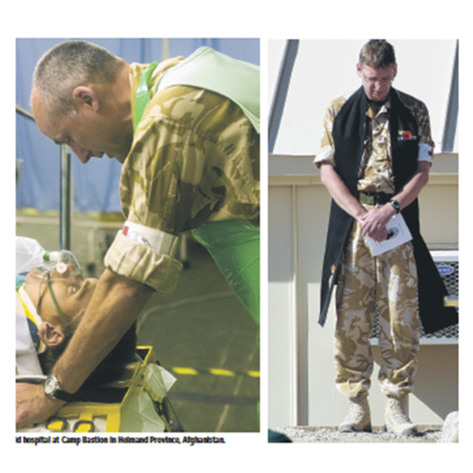Yorkshire Post : The Silence That Still Resonates
Publication Title: Yorkshire Post MagazinePages: 4-7
Writer: Clare Jenkins
Publisher: Johnston Press
Publication Date: 7th November 2009
To mark the 90th anniversary of the Armistice Day two-minute silence, Clare Jenkins takes a personal look at the ways in which the tradition lives on.
David Cotterrell is a war photographer and Professor of Fine Art at Sheffield Hallam University. He’s had two stints at Camp Bastion in Helmand Province in Afghanistan, and was in the camp on Armistice Day when a two-minute silence was observed.
“I’d seen things at the field hospital that I wasn’t prepared to see. So I was looking for some solace or contextual understanding for the seemingly random and violent injuries. The padre dealt with it by relating the sacrifice to previous precedents, putting it into a historical context.
I wanted someone to either attack, or compassionately explain, the reasons for the death and injury. It can’t do that, but what it can do is offer a simple universal space for people to share empathy, a common experience, and that is the silence.”
A year later, he was at Sheffield train station on November 11 when the clocks struck 11. “I was arriving to teach and the announcement came over the Tannoy. There was no formal ceremony, but some people did stop, others pushed past.
“It was the first time I’d heard it at a station and there seemed a greater awareness that this symbolic remembrance could be used to provide a collective acknowledgment that wars haven’t stopped.
The two-minute silence relates back to a nostalgic idea of sacrifice by a previous generation. But it should also remind us that we’ve not resolved things. It can never be enough, but it does offer a shared responsibility to memorialise the sacrifices of historic follies.
It’s a very simple thing to say that soldiers should never be deployed and wars should never happen. But we live where there is no threat and we have power over our own destinies. When you see people with no power, it’s harder to identify a clear solution.We can’t transpose a suburban model to areas where people are struggling to survive.”
Download this file here, or click the image on the right.